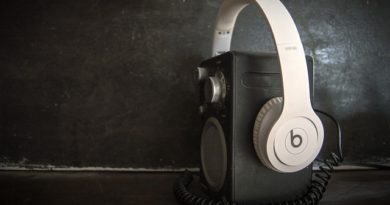23 Quotes from Brass Performance and Pedagogy
During my graduate studies at Carnegie Mellon University, I took the Brass Pedagogy class with George Vosburgh, former Principal Trumpet of the Pittsburgh Symphony Orchestra. In addition to Mr. Vosburgh’s own handouts, we also worked through Keith Johnson’s Brass Performance and Pedagogy. Recently, I re-read this small book and was reminded of the many helpful tips and suggestions that I originally pulled from this book. Rather than writing a review of this book, I am sharing the following quotes from the book that are little nuggets I found to be helpful for any brass teacher or performer. Page numbers are included, and quotes are underneath each chapter title.
Click here to purchase the book.
- Preface
- “Good teaching is art, not science, and any attempt to reduce it to pseudoscientific methodology is not only doomed to failure but speaks clearly as to the constricted thinking that even attempts such codification.” (xi)
- “One of the most challenging aspects of teaching musical performance is that the subject demands an immediate, clear, and public demonstration.” (xii)
- “As a teacher, one must remember to return to music daily, to listen as well as to teach and play in order to keep purpose, quality, and meaningful direction in one’s work.” (xii)
- Introduction
- “I believe that good playing is the result of the successful acquisition of the fundamentals of playing and the continuous development of those fundamentals to the highest possible levels through the years of conscientious practice.” (xiv)
- The Art of Teaching
- “The most important qualities any good teacher should possess are a thorough knowledge of the subject matter and a concern for the student’s progress.” (1)
- “[The most successful teachers] are uncompromising in what they expect from their students, and they are willing to do battle with inferior teachers, parents, and administrators rather than lower standards for the purpose of ease, personal advancement, or the convenience of serving a mindless bureaucratic system.” (2)
- Music as Metaphor
- “I firmly believe the lessons learned from performance and the intrinsic value of music are so great as to inform and shape any life in a genuinely enlighted way regardless of the specific career path.” (5)
- Teaching the Young Brass Player
- “The best teaching is that which challenges and encourages the student by setting high (but not unrealistic) goals and that builds confidence, dependability, and the desire to continue to advance.” (7)
- “For brass students, two of the most important areas of their efforts, both initially and throughout their careers, are those of singing and listening.” (8)
- “[…] the teacher should always keep in mind that the goal is to teach musical performance.” (10)
- Listening
- “By learning to hear (sing), the young student becomes product oriented (sound) rather than means oriented (mechanics).” (12)
- Developing a Concept of Sound
- “The primary manner by which children learn is the process we call imitation, which is a pattern of stimulus/response.” (15)
- “The principal reason so many young players sound poorly is that most of them have only heard each other […] Unfortunately, young musicians are frequently instructed in physiological matters before ever having heard a single beautiful phrase of music.” (16)
- Posture
- “There are two criteria by which posture must be judged in terms of its relationship to musical performance: (1) Does it allow the performer to work in the most comfortable manner commensurate with good performance? and (2) Does it allow for the player’s most physically efficient and effective performance? (21)
- Breathing
- “What we should be seeking from the breath is neither isometric tension nor a false sense of support but rather a motion. Good air is always moving […] If it is static, it is bad air and will almost certainly lead to an increase in tension in the body and constriction in the sound.” (26)
- “Breathing, more than any other aspect of playing, benefits or suffers as a direct result of posture.” (27)
- Mouthpiece Playing
- “Practicing on the mouthpiece alone emphasizes the fact that the player is the real source of the sound.” (41)
- The Warm-Up
- “The most important purpose of warming up is to formulate and connect the most appropriate musical concepts with the most efficient physical responses.” (45)
- Intonation
- “Never […] should the player think even for an instant that equipment is a substitute for finely developed playing skills or that good equipment relieves the player of final responsibility.” (54)
- Endurance
- “The ability to focus on the task at hand and to call up one’s well-practiced abilities on demand is the key not only to improved endurance but to overall good playing.” (62)
- Preparation
- “When programming a recital, it is wise to include a considerable amount of material that one has performed before. Most players ony come to feel that they know a piece well after they have played it in public several times.” (76)
- Performance Anxiety
- “By emphasizing these three ideas – (1) that being nervous is normal, (2) that solid preparation is essential, and (3) that making frequent public appearances is important – we can go a long way toward improving the quality of performances and toward enhancing the real satisfaction that comes from making music.” (90)
- Professional Ethics
- “It is important to remember that music is what one does, not what one is. Worth as an individual is not the same as musical accomplishment. We all know scoundrels who play well and saints who do not. All players go through periods of difficulty and doubt, and it is vital for one’s well being to distinguish between how well one plays and one’s self-worth. They are not the same.” (91)
Click here to purchase the book.




